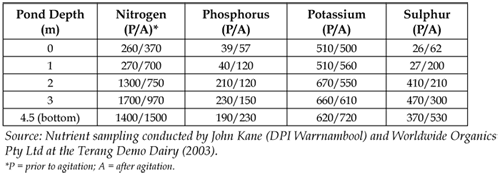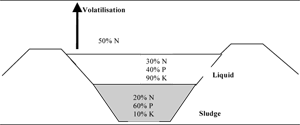Effluent Pond Systems
By Dairy Effluent Pond Pumping Ltd
Environmentally friendly, cost effective solutions for your dairy farm
Pump Out Anaerobic Ponds Annually
Pond Pumping
Annual pump out of solids, sludge and muck, returning nutrients to farm
We recommend that dairy farmers pump out the solids and nutrients annually at the same time as they are having the pond stirred.
Why yearly?
There is a large build up of sludge in the bottom of the pond each year. The sludge content and rain water was never taken into account when designing the storage capacity of a dairy pond. Now every year you lose 1/3rd storage capacity to crust and sludge build-up.
By using our services the thick sludge is thoroughly stirred and irrigated back to your farm through our travelling muck spreaders.
Even better still the effluent and nutrients are spread onto consented paddocks at the application rate that has been set in your resource consent!
Complete Effluent Pond Management - Making the Nutrients Work for You!
We recommend that dairy farmers take the time to consider the whole system from the pond liners and underlay, through to the biological treatment to help maintain your natural ecology and on to a cost effective pond stirrer that won't damage your pond liner and cause major capital expense outlay.
We believe effluent testing is an important part of nutrient management. The more nutrients that can remain on-farm, the more money will be saved by the farmer and the better it will be for the environment.
Using dairy effluent as a fertiliser
Dairy effluent is a natural fertiliser and soil conditioner and if managed effectively can enhance pasture growth and improve soil structure.
It is estimated during one lactation a 100 – cow herd deposits on the dairy yard:
- 50 kg of phosphorus (equivalent to about 568 kg of single superphosphate)
- 259 kg of nitrogen (equivalent to 540 kg of urea)
- 270 kg of Potassium (equivalent to 540 kg of muriate of potash)
Putting this into practice
Effluent can be utilised safely and effectively if it is a applied in accordance with environmental, pasture growth and soil fertility requirements.
- One ML ( A megalitre is one million litres ) of effluent applied to 1 ha is the same as 100mm of rainfall or irrigation per ha.
- Using these figures , applying the effluent at a rate of 1 ML per 4 ha ( 25mm or 0,25 ML/ha ) will put on 48 kg of N/ha, 12 kg of P/ha and 90 kg of K/ha.
- Understanding the fate of nutrients and where they are accumulating is the key to effective nutrient management, as it allows you to fine tune fertiliser decisions and manage farm hot spots. This is why you need to call us at Effluent Pond Systems
By taking care over selecting and implementing these systems, you have a lot better chance of spreading the effluent back onto your farm in a consistent manner. Effluent Pond Systems can help you set the right system up so contact us now.
One Size Plan Doesn't Fit All!
The nutrient content of individual effluent ponds varies widely. Thus, the amount of effluent to be applied varies widely from farm to farm and region to region.
It is strongly suggested that you have the effluent tested so that you can work out the actual nutrient application rates for your farm. If you contract Effluent Pond Systems to manage your ponds, we can do all this for you, with our soil testing and nutrient testing done in association with Hill Laboratories, so that your farm has the best chance of utilising your nutrients to not only save money on fertiliser, but also to give your farm the best chance of improved productivity.
In the graph below you can see nutrient concentrations at depth (kg/ML) in a pond prior to and after agitation (first or anaerobic pond).

The nutrient concentrations in the first (anaerobic) pond increased with depth for N, P and S but did not for K. Agitating (stirring) the pond did have an effect on mixing nutrients throughout the pond. Basing your application rate on the nutrient concentration at the top of the pond could mean that you will be out by a factor of over threefold if you use effluent from the bottom. You may be applying excessive amounts of nutrients to some areas and be at risk of burning crops and seedlings.
Therefore, when emptying an anaerobic pond that has been collecting nutrients for a number of years, it is recommended that this effluent be applied to an established pasture or to paddocks prior to cultivation (in other words, apply it before sowing a new crop or pasture).
During this demonstration research there was no nutrient gradient at depth with the second (storage) pond, which means that taking a sample at any level in a second pond will give an accurate result.
The money you spend on testing may well be saved in reduced fertiliser applications or by avoiding a problem with nitrates leaching to ground water, high potassium levels, salinity or high sodium levels.
What do you do now?
Contact Effluent Pond Systems for a total package system where we stir and empty your ponds back onto your pastures in the correct measurements after doing all the testing and then the spreading for you.
